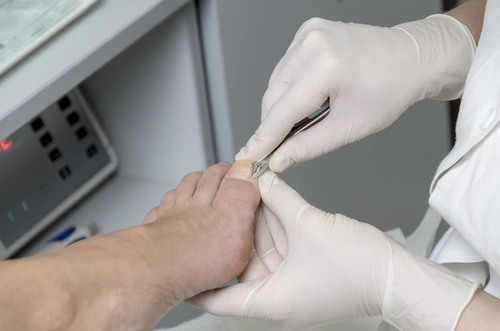Nail MDM Level with This 3-Step Method

Use points system to arrive at final level.
Coders reporting an evaluation and management service need to correctly identify the level of medical decision making (MDM) quickly. Failure to correctly spot MDM could land your practice in hot water.
Follow our three-step process to correctly identify the level of MDM each time your clinician performs an E/M encounter.
Whenever your physician performs an E/M service, you will have to scour patient documentation to ensure that your clinician has documented all the pertinent components of history, examination, and medical decision making.
If your physician does not document any one of the components captured, you might be forced to report a lower level of E/M service even though your clinician might have performed a higher level of E/M service.
“Medical decision making reflects the intensity of the cognitive labor performed by the physician,” says Mary I. Falbo, MBA, CPC, CEO of Millennium Healthcare Consulting, Inc. in Lansdale, PA. When checking on MDM, you will have to check for these three elements, and you can assign points to each one to help you select the correct level of the MDM:
Assigning points to each one of the components and tallying them can help you assess the MDM complexity level (e.g. straightforward, low, moderate, or high), which may also help in assessing the level of E/M code to report for the encounter. “MDM has three elements; diagnoses/management options, data, and risk. Two of the three need to be met in order to be considered toward the level of service,” says Suzan (Berman) Hauptman, MPM, CPC, CEMC, CEDC, senior principal of ACE Med, a medical auditing, coding and education organization in Pittsburgh, Pa.
To correctly report the apt level of MDM, you will need to analyze how to check for the above-mentioned elements in the patient documentation.
Step 1: Check the Severity of the Problem
The first step to identifying the level of MDM is to find out:
In order to check this, you will need to look through patient documentation to see if the problem is new or has already been established, the number of diagnoses your clinician is addressing, whether or not the patient has any symptoms that are getting worse, and if any additional workup is needed, as all these will help you assign points to identify the appropriate MDM level.
One way to assign points and assess the severity of the patient’s problem is the following:
In this scoring, if you have zero to one point, it represents “minimal,” two points are “limited, three points are “multiple,” and, four points are “extensive.”
Note: This point system is the Marshfield Clinic system, and many of the payers use this point system, although some payers might opt for different systems. Check with your payer if they use the same system of assigning points while checking the number of diagnoses and management options.
“In this system, whether a problem is ‘established’ or ‘new’ refers to whether or not the physician or other qualified health care professional has dealt with it before, not whether it is an established or new problem for the patient,” says Kent Moore, senior strategist for physician payment at the American Academy of Family Physicians.
Remember: You should not decide the level of E/M on the basis of the health of the patient. You cannot just reach out to a higher level of E/M if the patient is extremely sick. You will need to choose the MDM level only on the basis of documentation of the components that your clinician captured during the encounter. “The official rules for interpreting the MDM are identical for both the 1995 and 1997 E/M guidelines,” Falbo says.
Step 2: Determine the Complexity of Data Reviewed
The next step to considering the level of MDM is to determine the amount and/or complexity of the data that has been captured during the encounter or must be obtained and/or analyzed or reviewed as a result. Again, using the Marshfield Clinic system, you can assign points based on what your clinician reviewed or ordered during the encounter. You can assign possible points based on the following rubric:
Score the complexity of data in the same manner as the diagnoses: minimal (0-1), limited (2), moderate (3), and extensive (4+).
Note: You can score only one point for ordering and review of services within a given category. So, if your clinician ordered a CT and an MRI, that only counts as one point, since both services are in the imaging section of CPT® (70000 series). On the other hand, if your physician ordered a chest X-ray and an EKG, each would count for one point, since the services come from different categories (i.e., imaging and medical tests). As noted, you can assign two points if your clinician independently reviews an X-ray that has been brought into your office by the patient rather than simply reviewing the interpretation and report of the X-ray prepared by another physician.
Step 3: Assess the Level of Risk
The next and final step in helping you determining the level of MDM is to check the level of risk. As this step can be very difficult, you will need to ask your physician to be as thorough in documentation to help you assess the level of risk based on this documentation of the encounter.
In order to assess the level of risk, you need to check on the highest score from one of the three subcategories of presenting problem(s), diagnostic procedures ordered, and management options selected. You will need to only capture the highest score of the three subcategories and not from each of them to assess the risk level of the patient’s problem (minimal, low, moderate, or high).
“With established patients, only two of the three key components (i.e. history, exam, and MDM) are required for some categories of E/M services, like office or outpatient visits. Thus, if the MDM is one of them, then in order to bill a 99213 (which involves MDM of low complexity), there must be two of the following,” Hauptman says:
In the case of 99214, the things to look for are three points for diagnoses/management options, three points for data, and a moderate level of risk.




